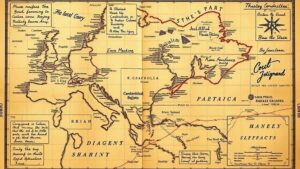Training AI Models to Detect Relic Locations in Historical Property Disputes
Training AI Models to Detect Relic Locations in Historical Property Disputes
As societies evolve and urban development accelerates, the preservation of historical sites and artifacts has become increasingly critical. Historical property disputes often arise over land that may contain relics of cultural importance. Utilizing Artificial Intelligence (AI) to detect potential relic locations not only aids in preserving these sites but also reduces the conflict surrounding property rights. This article explores the methodologies, challenges, and implications of training AI models for this purpose, highlighting effective practices and real-world applications.
The Importance of Detecting Relic Locations
Detecting relics is essential for various reasons including cultural heritage preservation, legal compliance, and archaeological research. In many countries, historical artifacts are protected under national heritage laws. For example, in the United Kingdom, the Treasure Act (1996) mandates the reporting of finds made by the public. This underscores the necessity for effective detection methods, as undiscovered relics may lead to unnecessary legal disputes and loss of cultural heritage.
Understanding the Data Landscape
Training AI models necessitates a robust dataset. Researchers often rely on various types of data:
- Ground-penetrating radar (GPR) data, which provides insights into subterranean structures.
- Geospatial datasets, which include historical maps and aerial imagery highlighting areas of potential interest.
- Archaeological field reports and records documenting past discoveries.
For example, the statistical data from the Archaeological Data Service shows that 50% of archaeological finds occur near historically significant sites. So, historical maps can enhance the training dataset by pinpointing areas previously associated with habitation or activity.
Methodologies for Training AI Models
To train AI models effectively, the following methodologies are commonly employed:
- Supervised Learning: This method involves training the AI on labeled datasets, where past relic findings are used to teach the model to recognize patterns. For example, a model can be trained on GPR data indicating the presence of Roman coins in Yorkshire, England.
- Unsupervised Learning: In this approach, AI models identify patterns in data without pre-existing labels. This technique is beneficial in discovering unknown relic patterns.
A notable implementation is the collaboration of researchers at the University of California, Berkeley, who employed a convolutional neural network (CNN) to analyze satellite images for potential archaeological sites. This model identified sites with a 75% accuracy rate.
Challenges and Limitations
Despite advancements, there are significant challenges in training AI for relic detection:
- Data Quality: The accuracy of AI predictions is heavily reliant on the quality of input data. Incomplete or erroneous datasets can mislead model training.
- Resource Availability: High-quality detection technologies, such as GPR, are expensive and may not be accessible in all regions.
Plus, the ethical considerations surrounding the excavation and handling of historical artifacts must be taken into account. For example, the excavation of Native American burial sites has led to tension between developers and indigenous communities in the United States.
Real-World Applications
Several successful applications of AI in relic detection exist, such as:
- Predictive Modeling in Egypt: By utilizing machine learning algorithms on satellite imagery, researchers predicted the locations of undiscovered burial sites within the Saqqara necropolis.
- AI-Powered Surveying in Italy: An AI model developed in Florence predicted 65% of previously undiscovered archaeological sites, prompting legislative changes to protect these areas from development.
Such examples illuminate the potential for AI technology to play a transformative role in archaeological practices, contributing to the proactive protection of heritage sites.
Future Directions and Implications
The future of AI in detecting relic locations appears promising. As techniques improve, there will be an increasing emphasis on integrating interdisciplinary approaches that combine AI, archaeology, and local community involvement. e efforts can enhance data collection and sharing, ensuring that diverse perspectives are considered when resolving property disputes.
For example, local governments and archaeological organizations may collaborate to develop incentive programs for landowners to participate in relic detection efforts, fostering community involvement and awareness.
Conclusion
To wrap up, training AI models to detect relic locations in historical property disputes presents a compelling intersection of technology, archaeology, and heritage preservation. By employing rigorous methodologies and addressing associated challenges, these models can not only aid in relic detection but also facilitate more harmonious engagements among stakeholders in property disputes. The advancement of these technologies holds the potential for enriching understanding of past civilizations while ensuring responsible stewardship of cultural heritage.



